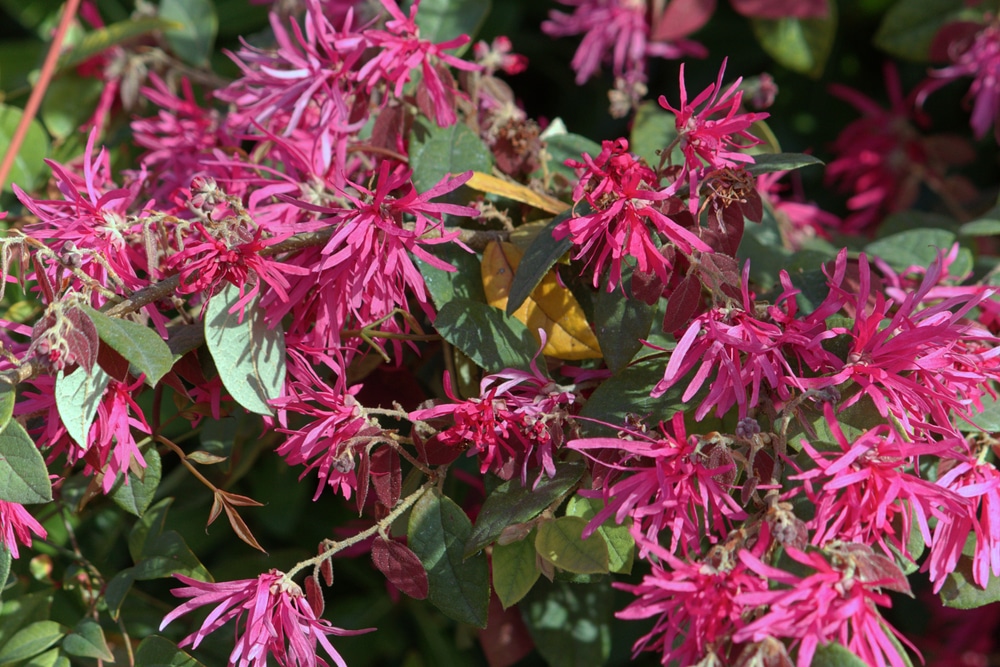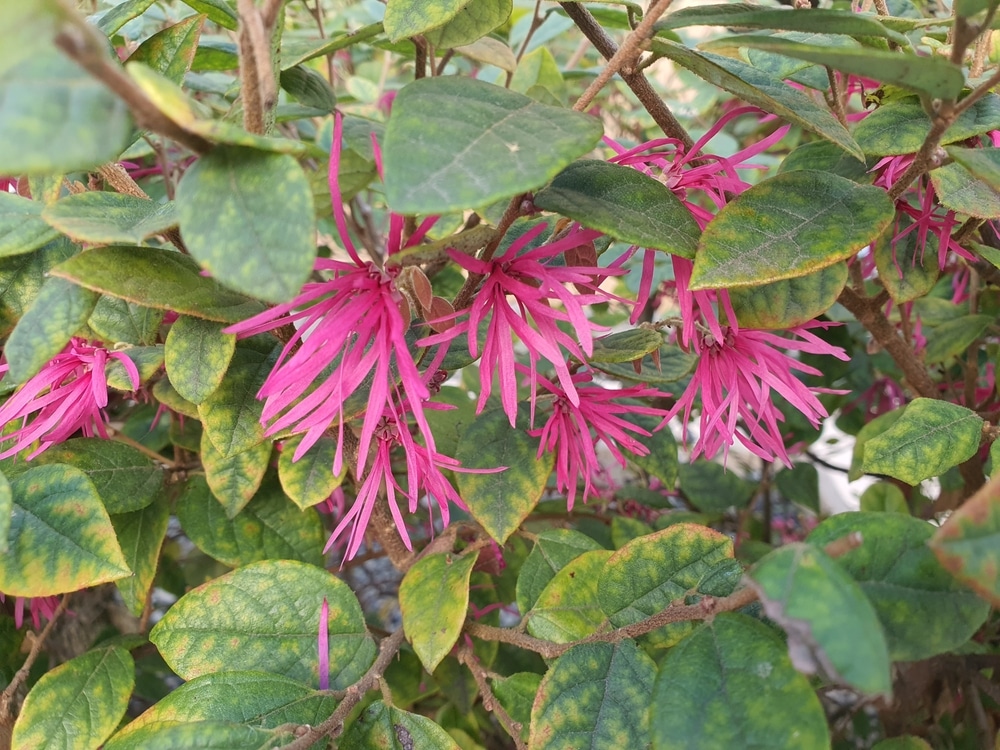The Loropetalum plant, a.k.a. The Chinese Fringe Flower is widely known for its attractive purple foliage and easygoing nature. The leaves tend to stay dark green or burgundy (depending on how much light it gets), with same-colored flowers atop the growth.
You might be surprised to find your loropetalum leaves turning brown one day, but what could be the reason for this? Let’s take a look and find out.
Reasons Why Your Loropetalum Leaves are Turning Brown

Overwatering
Overwatering is perhaps the most common reason why your Chinese fringe bush is sporting brown or decaying leaves. If you see the usually-green or purple leaves turning sickly yellow to rotten brown, then chances are that the plant is unable to bring water to the top of the leaves and hence, the changing of foliage color.
Plants should be able to bring water to the leaf and stems at the end, but if the root system is compromised then they will have a bit of trouble. Overwatering often leads to root rot, which in turn leads to the eventual death of your loropetalum if the problem is not addressed.
You might think that brown leaves on loropetalum shrubs are a sign that it’s thirsty, but more often than not it’s the exact opposite.
Fortunately, the Chinese Fringe is tougher than you’d assume. All you need to do is immediately stop watering and feel the top inch of the soil- is it overly wet or moist? If yes, allow the medium to dry out before you water again.
Frost Damage
Although Loropetalums are mostly grown in the southern part of the country they do tend to appear in cooler regions now and then. The shrub is hardy in zones 7 through 10 and is a warm-loving species (which explains why it needs full sunlight).
That said, loropetalum is notorious for frost sensitivity and can only withstand a few degrees below zero. The plant will get stressed, and its topmost leaves will start turning brown as a result of the freezing temperatures. It’s worth noting that new growth tends to get damaged more than the mature foliage, but in the end, your loropetalum is likely to survive the ordeal.
To prevent frost damage you can transport container fringe plants indoors and in temperatures ranging between 46 to 54 degrees F. If planted in gardens you can cover them with an old blanket or garden sheets during the night and when expecting heavy frost.
Over Fertilizing
Overfertilization is another factor in loropetalum leaves turning brown. This is known as ‘fertilizer burn’, or when there’s too much nitrogen content in the soil.
In general, Chinese Fringe won’t need as much fertilization as long as you put them in a location that gets at least partial sun daily. If you must, you should provide a slow-release fertilizer starting in spring and only two or three times per growing season.
Also, make sure you follow the manufacturer’s instructions when feeding your loropetalum shrubs. Brown, crispy leaves are a sure sign that the plant is getting too much nitrogen. To reduce the amount of nitrogen and save your fringe plant, you can run clean water from a hose to the base for at least 10 to 20 minutes to ‘flush’ it out.
Blight Damage
Blight, also known as anthracnose, is caused by fungi in the soil or moisture. This condition usually happens when spring is followed by heavy bouts of rain, as well as too much overhead watering. The leaves get too wet, and soon develop leaf spots and lesions that are brownish-black in color.
You’ll know it’s blight damage if your loropetalum’s new leaves and shoots have the characteristic leaf spot or lesions and fall off prematurely. The condition may come and go every growing season but it’s best avoided with proper watering.
To resolve blight on your Chinese Fringe Flower you’ll want to stop watering and wait several days before taking any further action. Using sterilized shears or scissors, cut away infected areas and dispose of the material promptly. If the soil is too wet after rain or watering, then it’s recommended that you amend it with small rocks or sand.
Blight may make your loropetalum plant appear unhealthy but there’s a high chance that it will recover.
